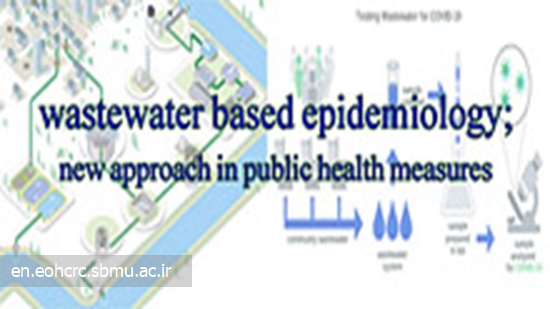wastewater based epidemiology

Wastewater based epidemiology
Fast and effective surveillance systems are the bedrock of prevention and control of infectious outbreaks.
With limited and time-consuming diagnostic tests, an alternative approach as a complementary tool to investigate virus circulation in the community is essential in a pandemic situation.
The importance of such a surveillance system has been highlighted more with the emergence of coronavirus respiratory disease (COVID-19) In December 2019, Wuhan, China.
SARS-CoV-2 patients might show different range of symptoms or few or non-specific symptoms to seek medical care. So a fast and accurate method to identify potential virus carriers and asymptomatic cases is critical to suppress the risk of disease transmission at the early stage.
All the community's excreted substances are transported to wastewater treatment plants (WWTP) by sewer systems that provide a pooled sample from a group of people in a specific geographical location at a point in time. So wastewater analysis could be equivalent to community-wide urine and fecal analysis.
The investigation of the occurrence and quantity of chemical and or biological markers such as pathogens, pharmaceuticals, and other human biomarkers in community wastewater provides comprehensive information on community health status in near real-time termed as wastewater-based epidemiology. WBE is invasive and population-wide that maintain individual anonymity.
WBE was first used to monitoring some illicit drugs in 2005 under the term sewage epidemiology. However, years before that, in the 1980s, the method was used to investigate polio circulation in the community in some countries and then adapted to evaluate international poliovirus vaccine campaigns efficacy by WHO 2003. This environmental surveillance system is still being used routinely in Egypt and Netherlands for polioviruses. It could give a better estimate of the virus's spread and determine whether there are potential cases because it also accounts for those who have only mild or no symptoms based upon analyses of wastewater compounds. This method was investigated for hepatitis A and norovirus outbreaks as an early warning system, where pathogenic viruses were identified days prior to patient diagnostic.
After the first report of SARS-CoV2 detection in patient's feces, WBE was proposed as a surveillance tool to investigate the virus spread in the community. The First information of SARS-CoV-2 detection in wastewater was reported in the Netherlands, and a few weeks later, the virus was detected in sewage water in Australia and France.
Since then, countries such as Brazil and New Zealand have adopted wastewater assessments as an infectious surveillance system. There is also a comprehensive wastewater testing system for SARS-CoV-2 ongoing in more than twenty cities in Canada.
Despite the promising aspects of utilizing WBE in COVID-19 surveillance, it should not be considered a candidate to replace the standard clinical diagnostic tests. Still, the combination of the two methods could provide more comprehensive information about the pandemic situation. There are also still challenges that should be considered and reformed.
Marjan Hashemi
Wednesday, March 10, 2021


Comment